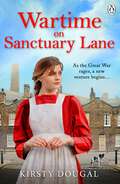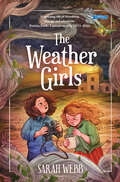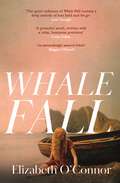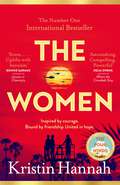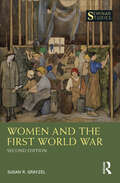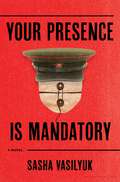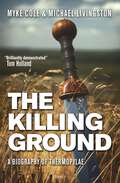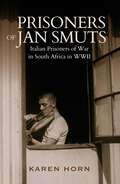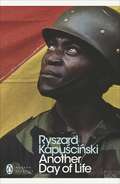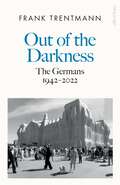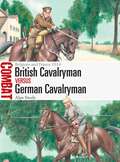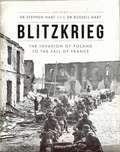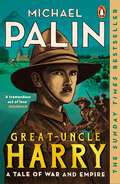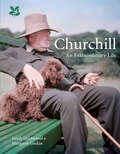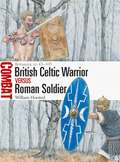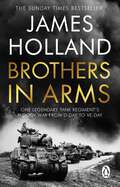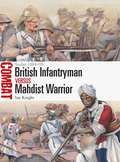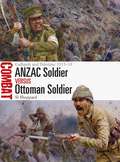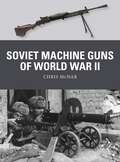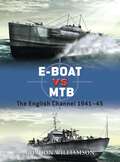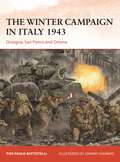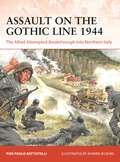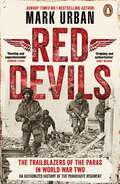- Table View
- List View
Wartime on Sanctuary Lane: The first novel in a brand new WWI saga series (Sanctuary Lane #1)
by Kirsty DougalCall the Midwife meets All Creatures Great and Small in this brand-new saga series set in a WWI East End Animal Clinic. 'I was hooked from the start. The meticulous period detail and true-to-life characters had me immersed in the action, and I didn’t want the story to end. A joy to read' Vicki Beeby, author of The Ops Room Girls 'Superbly plotted ... a heartwarming and engrossing read' Maisie Thomas, author of Christmas with the Railway Girls --- In the carnage of war can one woman's courage be the light in the dark? As the Great War rages across Europe, twenty-one-year-old Ruby Archer decides to ‘do her bit’ at an East End munitions factory. The work is relentless and deafening, but the camaraderie of the other girls carries her through. As London continues to be ravaged by German bombs, Ruby can’t ignore the abandoned animals scavenging the local streets. Mustering all of her courage, she decides to take action and open a weekly animal clinic. But opposition quickly closes in, when there is a war to win surely all efforts must be for the troops. With the help of her friends, can this East End girl show everyone that in wartime every life matters?--- Readers love Wartime on Sanctuary Lane: ‘A wonderful wartime family saga not to be put down’ ***** Reader Review ‘Beautiful... [I] loved it’ ***** Reader Review‘This book was BRILLIANT! I loved the characters - especially Ruby and Leah - both very interesting young women in very different ways’ ***** Reader Review‘I cannot wait to find out what happens next. I'm definitely keen to read more books by Kirsty!’ ***** Reader Review ‘Wow what can I say what a brilliant book… [I] loved it’ ***** Reader Review
The Weather Girls
by Sarah WebbIt's 1944. Twelve-year-old Grace Devine lives at Blacksod Lighthouse and weather station in County Mayo with her parents and little brother. When a German plane crashes nearby, she and her best friend Sibby risk their lives to save the young pilot. Grace's family take him in, but their neighbours are horrified at having an 'enemy' in their midst. Meanwhile, the Met Office in England suddenly asks Blacksod to send them weather reports every hour. But why? As the wind and rain howl outside, Grace begins to understand that something important is happening, something to do with the war – and she is right in the eye of the storm. A tale of bravery, adventure and a remarkable friendship, inspired by true events from World War 2.
Whale Fall: One of the Observer's Top Ten Debuts of 2024
by Elizabeth O'Connor'I didn't want it to end' - Maggie O'Farrell'Powerful . . . written with a calm, luminous precision' - Colm TóibínAn Observer Best Debut of the Year 2024It is 1938 and for Manod, a young woman living on a remote island off the coast of Wales, the world looks ready to end just as she is trying to imagine a future for herself. The ominous appearance of a beached whale on the island's shore, and rumours of submarines circling beneath the waves, have villagers steeling themselves for what’s to come. Empty houses remind them of the men taken by the Great War, and of the difficulty of building a life in the island's harsh, salt-stung landscape.When two anthropologists from the mainland arrive, Manod sees in them a rare moment of opportunity to leave the island and discover the life she has been searching for. But, as she guides them across the island’s cliffs, she becomes entangled in their relationship, and her imagined future begins to seem desperately out of reach.Elizabeth O’Connor’s beautiful, devastating debut Whale Fall tells a story of longing and betrayal set against the backdrop of a world on the edge of great tumult.'The quiet cadences of Whale Fall contain a deep melody of loss held and let go. It is a gentle, tough story about profound change' - Anne Enright
The Women: Powerful and heartbreaking, the eagerly awaited novel everyone is talking about for 2024
by Kristin Hannah'Astonishing. Compelling. Powerful' – Delia Owens, bestselling author of Where the Crawdads Sing'Stuns with sacrifice. Uplifts with heroism' – Bonnie Garmus, bestselling author of Lessons in ChemistryFrom the worldwide bestselling author of The Four Winds, The Nightingale and Firefly Lane (a Number One series on Netflix), The Women is a story of devastating loss and epic love. It would be the journey of a lifetime . . .‘Women can be heroes, too’. When twenty-year-old nursing student, Frances “Frankie” McGrath, hears these unexpected words, it is a revelation. Raised on California’s idyllic Coronado Island and sheltered by her conservative parents, she has always prided herself on doing the right thing, being a good girl. But in 1965 the world is changing, and she suddenly imagines a different path for her life. When her brother ships out to serve in Vietnam, she impulsively joins the Army Nurses Corps and follows his path.As green and inexperienced as the young men sent to Vietnam to fight, Frankie is overwhelmed by the chaos and destruction of war, as well as the unexpected trauma of coming home to a changed America. Frankie will also discover the true value of female friendship and the heartbreak that love can cause.Praise for Kristin Hannah:‘Powerful and compelling’ – Christy Lefteri, bestselling author of The Beekeeper of Aleppo‘You would be hard-pressed to find a book club that has not discussed one of her novels’ – New York Times‘A rich, compelling novel of love, sacrifice and survival’ – Kate Morton‘A masterclass’ – Karen Swan‘Powerful’ – Matt Haig
Women and the First World War (Seminar Studies)
by Susan R. GrayzelIn this revised version of a ground-breaking global history of women and the First World War, Susan Grayzel shows the multiple ways in which women faced the enormous challenges the war presented, both the losses as well as the opportunities that the war provided. The First World War was a total war requiring the mobilisation of millions of both civilians and combatants. It decisively shaped the modern world. A century after the signing of the last peace treaty to end this conflict, its experiences and legacies for women continue to inspire debate and interest. With new evidence from the tremendous outpouring of scholarship on women in all participant states, including those in occupied territories, Europe and its overseas empires, Asia, the Middle East, Africa and the United States over the last twenty years, this edition greatly expands the coverage of the war geographically while continuing to showcase diverse women’s voices. Topical in its approach, it allows for a thorough exploration of the intersectional experiences of women. Including new documents highlighting the ways in which women wrote their wars and that detail the impact of this conflict on women of different statuses and geographies, this book opens the door to further inquiry on the women of the First World War. With documents providing first-hand accounts, a chronology and a glossary, the book is an ideal text for students studying the First World War or the history of women.
Women and the First World War (Seminar Studies)
by Susan R. GrayzelIn this revised version of a ground-breaking global history of women and the First World War, Susan Grayzel shows the multiple ways in which women faced the enormous challenges the war presented, both the losses as well as the opportunities that the war provided. The First World War was a total war requiring the mobilisation of millions of both civilians and combatants. It decisively shaped the modern world. A century after the signing of the last peace treaty to end this conflict, its experiences and legacies for women continue to inspire debate and interest. With new evidence from the tremendous outpouring of scholarship on women in all participant states, including those in occupied territories, Europe and its overseas empires, Asia, the Middle East, Africa and the United States over the last twenty years, this edition greatly expands the coverage of the war geographically while continuing to showcase diverse women’s voices. Topical in its approach, it allows for a thorough exploration of the intersectional experiences of women. Including new documents highlighting the ways in which women wrote their wars and that detail the impact of this conflict on women of different statuses and geographies, this book opens the door to further inquiry on the women of the First World War. With documents providing first-hand accounts, a chronology and a glossary, the book is an ideal text for students studying the First World War or the history of women.
A World of Enemies: America’s Wars at Home and Abroad from Kennedy to Biden
by Osamah F. KhalilA sobering account of how the United States trapped itself in endless wars—abroad and at home—and what it might do to break free.Over the past half-century, Americans have watched their country extend its military power to what seemed the very ends of the earth. America’s might is felt on nearly every continent—and even on its own streets. Decades ago, the Wars on Drugs and Terror broke down the walls separating law enforcement from military operations. A World of Enemies tells the story of how an America plagued by fears of waning power and influence embraced foreign and domestic forever wars.Osamah Khalil argues that the militarization of US domestic and foreign affairs was the product of America’s failure in Vietnam. Unsettled by their inability to prevail in Southeast Asia, US leaders increasingly came to see a host of problems as immune to political solutions. Rather, crime, drugs, and terrorism were enemies spawned in “badlands”—whether the Middle East or stateside inner cities. Characterized as sites of endemic violence, badlands lay beyond the pale of civilization, their ostensibly racially and culturally alien inhabitants best handled by force.Yet militarized policy has brought few victories. Its failures—in Iraq, Afghanistan, US cities, and increasingly rural and borderland America—have only served to reinforce fears of weakness. It is time, Khalil argues, for a new approach. Instead of managing never-ending conflicts, we need to reinvest in the tools of traditional politics and diplomacy.
Your Presence Is Mandatory: A Novel
by Sasha VasilyukA riveting debut novel, based on real events, about a World War II veteran with a secret that could land him in the Gulag, and his family who are forced to live in the shadow of all he has not told them.Ukraine, 2007. Yefim Shulman, husband, grandfather and war veteran, was beloved by his family and his coworkers. But in the days after his death, his widow Nina finds a letter to the KGB in his briefcase. Yefim had a lifelong secret, and his confession forces them to reassess the man they thought they knew and the country he had defended.In 1941, Yefim is a young artillerist on the border between the Soviet Union and Germany, eager to defend his country and his large Jewish family against Hitler's forces. But surviving the war requires sacrifices Yefim never imagined-and even when the war ends, his fight isn't over. He must conceal his choices from the KGB and from his family. Spanning seven decades between World War II and the current Russia-Ukraine conflict, Your Presence Is Mandatory traces the effect Yefim's coverup had on the lives of Nina, their two children and grandchildren. In the process, Sasha Vasilyuk shines a light on one family caught between two totalitarian regimes, and the grace they find in the course of their survival.
The Killing Ground: A Biography of Thermopylae
by Myke Cole Dr Michael LivingstonAn exploration into why and how Thermopylae is one of the most blood-soaked patches of ground in history – and what its past can tell us about our future.'Brilliantly demonstrated.' - Tom HollandSince the dawn of the Classical Era up to World War II, thousands have lost their lives fighting over the pass at Thermopylae. Historians Cole and Livingston provide an exciting account of each of the 27 battles and holding actions that took place. The epic events of 480 BC when 300 Spartans attempted to hold the pass has been immortalised in poetry, art, literature and film. But no history has ever detailed the other events from the very first battle through to the battles fought by Romans, Byzantines, Huns and Ottomans during the early and late medieval periods and finally the two desperate struggles against German occupying forces during World War II. The Killing Ground details the background and history of each conflict, the personalities and decision making of the commanders, the arms and tactics of the troops, and how each battle played out. Cole and Livingston have surveyed the ground to provide a boots-on understanding of each battle. Their command of multiple ancient and medieval languages means they have provided their own translations of much of the source material, ensuring new insights into each battle. This uncompromising scholarship is woven together into a compelling and unforgettable history that grips the reader from start to finish.
Prisoners of Jan Smuts: Italian Prisoners of War in South Africa in WWII
by Karen HornEqually skilled in a variety of trades other than in the art of love, the Italian prisoners of war (POWs) who were incarcerated in South Africa during the Second World War are a source of great fascination to this day. Who were these men? And what made some of them attempt dramatic escapes, while others wanted to stay behind after the war? The first Italian POWs arrived in the Union of South Africa in early 1941, most of them being held in Zonderwater Camp outside Cullinan or in work camps across the country. The government of Jan Smuts saw them as a source of cheap labour that would contribute to harvesting schemes, road-building projects such as the old Du Toit's Kloof Pass between Paarl and Worcester and even to prickly-pear eradication schemes. Prisoners of Jan Smuts recounts the stories of survival and shenanigans of the Italian POWs in the Union through the eyes of five prisoners who had documented their experiences in memoirs and letters. While many POWs seemed to appreciate the opportunities to gain new skills, others clung to the Fascist ideas they had grown up with and refused to work. Many opted to remain in South Africa once the war had ended, forging quite a legacy. These included sculptor Edoardo Villa, who left an important mark in the local and international art world, and businessman Aurelio Gatti, who built an ice-cream empire whose gelato was to delight generations of South Africans.
Another Day of Life (Forsyte chronicles)
by Ryszard Kapuscinski William Brand'This is a very personal book, about being alone and lost'. In 1975 Kapuscinski's employers sent him to Angola to cover the civil war that had broken out after independence. For months he watched as Luanda and then the rest of the country collapsed into a civil war that was in the author's words 'sloppy, dogged and cruel'. In his account, Kapuscinski demonstrates an extraordinary capacity to describe and to explain the individual meaning of grand political abstractions.
Out of the Darkness: The Germans, 1942-2022
by Frank TrentmannA groundbreaking new history of the people at the centre of Europe, from the Second World War to todayIn 1945, Germany lay in ruins, morally and materially. The German people stood condemned by history, responsible for a horrifying genocide and a war of extermination. But by 2015 Germany looked to many to be the moral voice of Europe, welcoming almost one million refugees. At the same time, it pursued a controversially rigid fiscal discipline and made energy deals with a dictator. Many people have asked how Germany descended into the darkness of the Nazis, but this book asks another vital question: how, and how far, have the Germans since reinvented themselves?Trentmann tells the dramatic story of the Germans from the middle of the Second World War, through the Cold War and the division into East and West, to the fall of the Berlin Wall and the reunited nation's search for a place in the world. Their journey is marked by extraordinary moral struggles: guilt, shame and limited amends; wealth versus welfare; tolerance versus racism; compassion and complicity. Through a range of voices - German soldiers and German Jews; environmentalists and coal miners; families and churches; volunteers, migrants and populists - Trentmann paints a remarkable and surprising portrait over 80 years of the conflicted people at the centre of Europe.
British Cavalryman vs German Cavalryman: Belgium and France 1914 (Combat)
by Alan SteeleFully illustrated, this book casts light on the utility and role of the German and British cavalry in the early stages of World War I on the Western Front.In the early months of World War I, before the fighting degenerated into static trench warfare, there was a brief period of mobile combat as the German Army advanced through Belgium and northern France, forcing the French and British forces facing them to retreat. Both sides in the escalating conflict deployed substantial numbers of cavalry units to screen their infantry forces, conduct reconnaissance and harness their superior mobility to undertake aggressive combat operations. In the summer of 1914, the British cavalry had the difficult task of covering the withdrawal of the British Expeditionary Force and the German cavalry, the equally demanding task, after weeks of combat and forced marches, of maintaining contact with a rapidly retiring enemy.In this book a comparative assessment is made of each side's doctrine, organization, equipment and training, followed by a detailed analysis of their actual performance in three key encounter actions: Casteau/Soignies (22 August), Cérizy/Moÿ (28 August) and Le Montcel/Frétoy (7 September). This analysis is supported by carefully chosen photographs and specially commissioned full-colour artwork and maps.
Blitzkrieg: The Invasion of Poland to the Fall of France
by Stephen A. Hart Russell HartA fascinating study of the devastating new form of warfare that redrew the map of Europe in the opening year of World War II, bringing about the military collapse of three modern industrialized armies. On 1 September 1939, Nazi Germany launched the invasion of Poland, employing a new type of offensivewarfare: Blitzkrieg. So named by Allied observers because of the shock and rapidity of its effects, this newapproach was based on speed, manoeuvrability and concentration of firepower. The strategy saw startlingsuccess as the panzer divisions, supported by Stuka dive-bombers, spread terror and mayhem, reachingWarsaw in just one week. Aided by the intervention of the Soviet Union in the east, the campaign was overin a mere 36 days.This astonishing feat was followed by Operation Weserübung, the invasion of Denmark and then Norway in1940, the first joint air-sea-land campaign in the history of warfare. Even more striking an achievement wasthe swift and conclusive defeat of France during May–June 1940. Refusing to let its forces dash themselvesagainst the fortifications of the Maginot Line, Germany instead sent its divisions through neutral Belgiumand northern France in Fall Gelb ('Case Yellow'), destroying Allied resistance and pursuing the remnant ofthe British and French forces to Dunkirk in an audacious and devastatingly effective assault. During thecourse of Fall Rot ('Case Red') over the following 20 days, German forces pressed the attack and by 25 Junehad forced France's leaders into a humiliating capitulation.Illustrated throughout with detailed maps, artwork and contemporary photographs, Blitzkrieg: TheInvasion of Poland to the Fall of France tells the story of these first breakneck attacks, examining the armedforces, leaders, technology, planning and execution in each campaign as well as the challenges faced by theGermans in the pursuit of this new and deadly form of warfare.
Great-Uncle Harry: A Tale of War and Empire
by Michael Palin'An important historical record and a well-paced story in its own right, Great-Uncle Harry is also much more than that: a tremendous act of love.' Guardian___________________________________From the time, many years ago, when Michael Palin first heard that his grandfather had a brother, Harry, he was determined to find out more about him.The quest that followed involved hundreds of hours of painstaking detective work. Michael dug out every bit of family gossip and correspondence he could. He studied every relevant official document. He tracked down what remained of his great-uncle Harry's diaries and letters, and pored over photographs of First World War battle scenes to see whether Harry appeared in any of them. He walked the route Harry took on that fatal, final day of his life amid the mud of northern France. And as he did so, a life that had previously existed in the shadows was revealed to him.Great-Uncle Harry is an utterly compelling account of an ordinary man who led an extraordinary life. A blend of biography, history, travelogue and personal memoir this is Michael Palin at his very finest.___________________________________________PRAISE FOR EREBUS:'Beyond terrific. I didn't want it to end.' BILL BRYSON'Magisterial . . . Palin brings energy, wit and humanity to a story that has never ceased to tantalise people.' THE TIMES'Everybody's talking about it . . . A brilliant book.' CHRIS EVANS'I absolutely loved it: I had to read it at one sitting.' LORRAINE KELLY
Churchill: An Extraordinary Life
by Sarah Gristwood Margaret Gaskin National Trust BooksA short illustrated life of one of Britain's most revered people of all time, covering all periods of his life but always returning to his literal and spiritual home, Chartwell.
British Celtic Warrior vs Roman Soldier: Britannia AD 43–105 (Combat)
by William HorstedAn illustrated study of the British tribal warriors and Roman auxiliaries who fought in three epic battles for control of Britain in the 1st century AD. Following the Roman invasion of Britain in AD 43, the tribes of the west and north resisted the establishment of a 'Roman peace', led in particular by the chieftain Caratacus. Even in the south-east, resentment of Roman occupation remained, exploding into the revolt of Boudicca's Iceni in AD 60. Roman auxiliaries from two particular peoples are known to have taken part in the invasion of Britain: the Tungrians, from what is now Belgium, and the Batavians, from the delta of the River Rhine in the modern Netherlands. From the late 80s AD, units of both the Batavians and the Tungrians were garrisoned at a fort at Vindolanda in northern Britain. The so called 'Vindolanda tablets' provide an unparalleled body of material with which to reconstruct the lives of these auxiliary soldiers in Britain.Featuring full-colour maps and specially commissioned battlescene and figure artwork plates, this book examines how both the British warriors and the Roman auxiliaries experienced the decades of conflict that followed the invasion. Their recruitment, training, leadership, motivation, culture and beliefs are compared alongside an assessment of three particular battles: the final defeat of Caratacus in the hills of Wales in AD 50; the Roman assault on the island of Mona (Anglesey) in AD 60; and the battle of Mons Graupius in Scotland in AD 83.
Brothers in Arms: One Legendary Tank Regiment's Bloody War from D-Day to VE-Day
by James HollandFrom the bestselling author of Normandy '44 and Sicily '43, a brilliant new history of the last days of the war'Seldom is war so vividly described...An assault on the senses...Painful to read, impossible to put down' Gerard DeGroot, The TimesIt took a certain type of courage to serve in a tank in the Second World War. Encased in steel, surrounded by highly explosive shells, a big and slow-moving target, every crew member was utterly vulnerable to enemy attack from all sides. Living - and dying - in a tank was a brutal way to fight a war.The Sherwood Rangers were one of the great tank regiments. They had learned their trade the hard way, in the burning deserts of North Africa. From D-Day onwards, they were in the thick of the action til the war's end. They and their Sherman tanks covered thousands of miles and endured some of the fiercest fighting in Western Europe. Their engagements stretch from the Normandy beaches to the bridges at Eindhoven. They were the first British unit into Germany, grinding across the Siegfried Line and on into the Nazi heartland.Through compelling eye-witness testimony and James Holland's expert analysis, Brothers In Arms brings to vivid life the final bloody scramble across Europe and gives the most powerful account to date of what it was really like to fight in the dying days of World War Two.
British Infantryman vs Mahdist Warrior: Sudan 1884–98 (Combat)
by Ian KnightIn the early 1880s, Britain intervened in independent Egypt and seized control of the Suez Canal. British forces were soon deployed to Egypt's southern colony, the Sudan, where they confronted a determined and capable foe amid some of the world's most inhospitable terrain. In 1881 an Islamic fundamentalist revolt had broken out in the Sudan, led by a religious teacher named Muhammad Ahmad bin Abd Allah, who proclaimed himself al-Mahdi, 'The Guided One'. In 1884, Mahdist forces besieged the Sudanese capital of Khartoum; Colonel Charles Gordon was sent to the city with orders to evacuate British personnel, but refused to leave. Although the British despatched a relief column to rescue Gordon, the Mahdists stormed Khartoum in January 1885 and he was killed. British troops abandoned much of the Sudan, but renewed their efforts to reconquer it in the late 1890s, in a bloody campaign that would decide the region's fate for generations. Written by leading expert Ian Knight, this fully illustrated study examines the evolving forces, weapons and tactics employed by both sides in the Sudan, notably at the battles of Abu Klea (16–18 January 1885), Tofrek (22 March 1885) and Atbara (8 April 1898).
ANZAC Soldier vs Ottoman Soldier: Gallipoli and Palestine 1915–18 (Combat)
by Si SheppardIn 1915–18, ANZAC and Ottoman soldiers clashed on numerous battlefields, from Gallipoli to Jerusalem. This illustrated study investigates the two sides' fighting men.The Gallipoli campaign of 1915–16 pitched the Australian and New Zealand volunteers known as the ANZACs into a series of desperate battles with the Ottoman soldiers defending their homeland. In August 1915, the bitter struggle for the high ground known as Chunuk Bair saw the peak change hands as the Allies sought to overcome the stalemate that set in following the landings in April. The ANZACs also played a key part in the battle of Lone Pine, intended to divert Ottoman attention away from the bid to seize Chunuk Bair. The Gallipoli campaign ended in Allied evacuation in the opening days of 1916. Thereafter, many ANZAC units remained in the Middle East and played a decisive role in the Allies' hard-fought advance through Palestine that finally forced the Turks to the peace table. The fateful battle of Beersheba in October 1917 pitted Australian mounted infantry against Ottoman foot soldiers as the Allies moved on Jerusalem. In this book, noted military historian Si Sheppard examines the fighting men on both sides who fought at Lone Pine, Chunuk Bair and Beersheba. The authoritative text is supported by specially commissioned artwork and mapping plus carefully chosen archive photographs.
Soviet Machine Guns of World War II (Weapon #81)
by Chris McNabThis study looks at how the Soviet armed forces developed and deployed a range of machine guns that fitted with their offensive and defensive infantry tactics across six years of total war.In 1939, three machine guns dominated the Red Army's front-line infantry firepower – the DShK 1938 heavy machine gun, the PM M1910 medium/heavy machine gun and the Degtyaryov DP-27, a lighter, bipod-mounted support weapon. Confronted by cutting-edge German technology during the Great Patriotic War (1941–45), the Soviets responded with the development of new weaponry, including the RPD light machine gun, the 7.62×54mmR SG43 medium machine gun and the improved version of the DP-27, the DPM. Taken together, all these weapons gave the Red Army a more practical range of support weapons, better able to challenge the Germans for fire superiority on the battlefield. Fully illustrated, this study explains the technology and the tactics of these machine guns. Noted authority Chris McNab sets out how these machine guns were distributed and tactically applied and provides numerous examples of the weapons in action, from assault teams on the streets of Stalingrad to tank crews struggling for survival at Kursk. The book also reflects upon the weapons' post-war service; many of the machine guns remain in front-line use today. Illustrated with high-quality photographs and specially commissioned artwork, this is a deep analysis of these essential tools of warfare within the Soviet forces.
E-Boat vs MTB: The English Channel 1941–45 (Duel)
by Gordon WilliamsonAn examination of the 'small boat' war between the Germans and the British in the English Channel.During the Second World War, German E-Boats were so active in the English Channel that the narrow stretch of water became known as 'E-Boat Alley'. To counter the threat of these E-Boats, Britain brought its coastal forces to bear – flotillas of small Motor Torpedo and Gun Boats (MTBs and MGBs) and Motor Launches (MLs). As the Germans sought to maintain their supremacy in Channel waters, they continued to develop their E-Boat designs to accommodate more armor and more firepower. Rather than matching the newer E-Boats for armament, the British developed several types to fulfill the varied roles for which the Kriegsmarine were attempting to use the E-Boat. Illustrated with high-quality photographs and battlescene artworks, this book details this developing conflict, examining the evolution of the boats involved, and covering their battles from fights in the Thames Estuary to the build-up for D-Day.
The Winter Campaign in Italy 1943: Orsogna, San Pietro and Ortona (Campaign #395)
by Pier Paolo BattistelliA gripping tale of three crucial battles fought at the end of 1943 as Allied forces approached the Gustav Line in Italy.After repulsing the German counter-attack at Salerno in September 1943, the US Fifth Army and British Eighth Army advanced up the Italian Peninsula. By October, the Allied armies had reached the Volturno Line, forcing a critical decision in German strategy: a prolonged defence would be conducted in southern Italy, contesting the Allied advance using the complex terrain features. By mid-November, the two Allied armies were approaching the German defensive lines along the Garigliano and the Sangro rivers. Here, US 5th Army would attack through the Mignano gap towards San Pietro Infine, while British Eighth Army would seize Ortona on the Adriatic coast and Orsogna. A brutal struggle ensued, with the German defenders attempting to hold their positions. The fighting at Ortona in particular (labelled a 'mini Stalingrad') would be particularly grueling for the Canadian forces involved. This fascinating work focuses on several little-known battles fought in Italy following the German withdrawal from the Salerno bridgehead and from Taranto. Maps and diagrams present an easy to follow overview of the multiple operations of this complex campaign. The forces of the opposing sides (including American, German, Canadian, New Zealand and British troops), and the three decisive battles fought in late 1943, are brought vividly to life in period photos and superb battlescene artworks.
Assault on the Gothic Line 1944: The Allied Attempted Breakthrough into Northern Italy (Campaign #387)
by Pier Paolo BattistelliEnjoy a detailed examination of Operation Olive as US, British, Commonwealth and Allied forces seek to smash through the last German defensive line in Italy.The Italian theatre of operations post-summer 1944 was often (and incorrectly) surmised at the time as a quiet sector of World War II, populated with troops who were relieved not to find themselves fighting in North-West Europe. Yet the true nature of the hard fighting that took place here was soon revealed when the Allies began their assault on the Axis Gothic Line defences, known as Operation Olive. In this book, Italian military historian Pier Paolo Battistelli documents the dual Allied offensive spearheaded by American and British units to smash through what was supposed to be the final Axis defensive line in Italy before the Alps. The overall strategic aims of both the Axis and Allied leaders are explored, together with the organization of the forces committed.The expertly researched maps and 3D diagrams guide the reader through the progress of the phased battles in challenging terrain. Photographs and specially commissioned artworks show the soldiers that fought on both sides, including American, Canadian, Indian, Brazilian, Polish, New Zealander, British, German and Italian troops, as well as the materiel they employed. The result is an essential illustrated guide to a fascinating and complex late-war campaign.
Red Devils: The Trailblazers of the Parachute Regiment in World War Two: An Authorized History
by Mark Urban'Gripping and authoritative' Andy McNab'Superb accounts of the battles and a deep understanding of personalities' Patrick Bishop, The TelegraphA GRIPPING, AUTHORISED HISTORY OF THE DARING 'RED DEVILS' TOLD THROUGH THE FATES OF SIX HEROES . . . In Britain they were known as The Parachute Regiment, but their German enemies christened them The Red Devils. Circus performers, solicitors, gravediggers, family men. . . they were ordinary people who became wartime heroes.Showing what it took to succeed in this new regiment, Urban vividly brings to life six men and their experiences across D-Day, Arnhem and WW2 - from the recently-widowed Geoffrey Pine-Coffin, who had to leave his young son to head to the front, to Mike Lewis, whose photographs became iconic images of war.Using deep archival research, British and German sources, and new material from the men's families, Red Devils paints a true and moving picture of the heart of war.PUBLISHED ON THE 80TH ANNIVERSARY OF THEIR FIRST CAMPAIGN: OPERATION TORCH IN NORTH AFRICA
